Elephants are one of the largest mammals on Earth. They are loved by many for their intellect and varied personalities. They are easily distinguishable by their large bodies, huge fan-like ears, and long trunks. In this article, we will be discussing all things elephant trunks. Discover how big they truly get, what the uses of it are, and how they developed them in the first place. Let’s dive into the incredible world of this animal and learn all about elephant trunks.
How Big Do They Get?
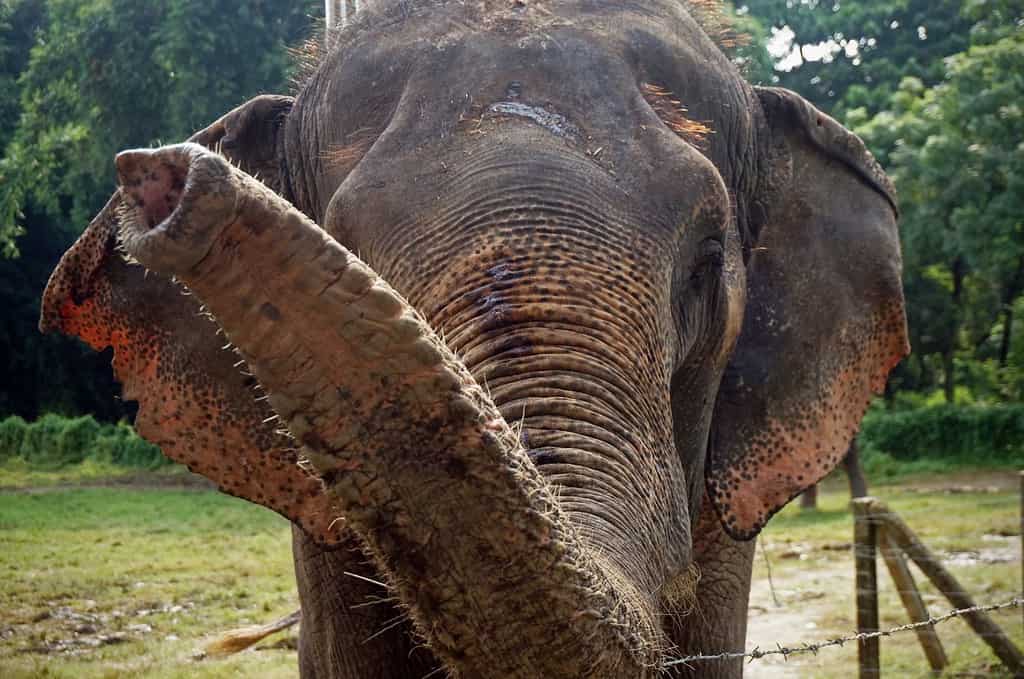
With their trunk, elephants can lift 4.5% of their weight.
©KhimaTh/Shutterstock.com
As the largest land mammal on the planet, it is no secret that elephants are massive animals. Reaching between 10 and 13 feet tall and weighing between 2 and 8 tons, these creatures are enormous. With their body being so large, it is no surprise that their trunks would also be quite large. On average, the trunk of an African elephant can reach up to 7 feet long. For an Asian elephant, it can reach up to 6 feet long. Also, they can lift 4.5% of their weight with their trunk alone. For a male elephant that is around 595 pounds.
Difference Between African and Asian Trunks
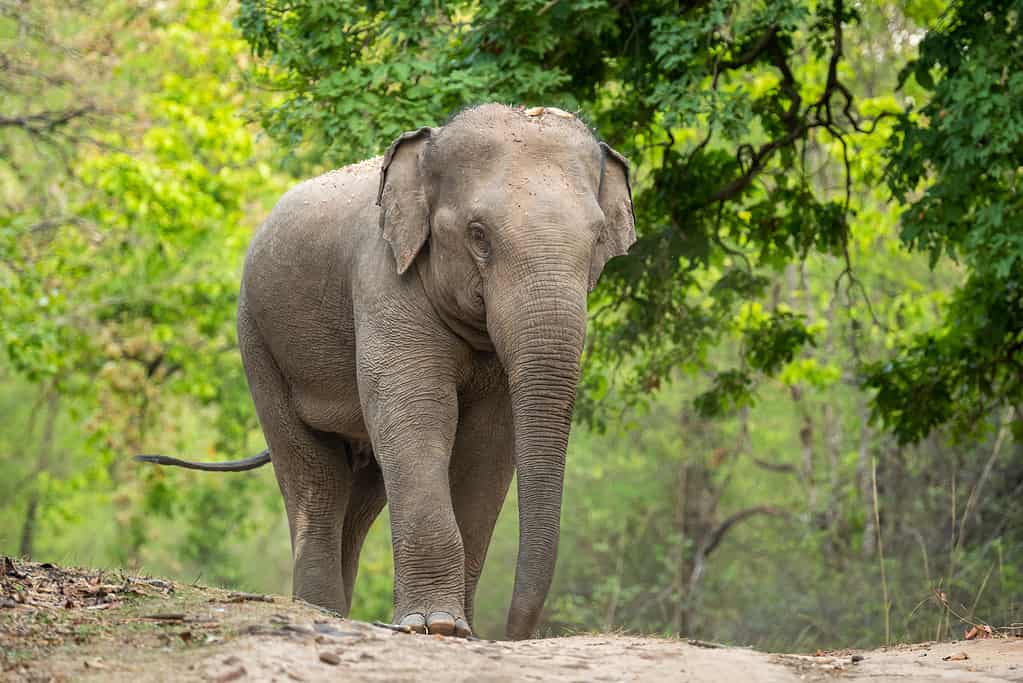
The Asian elephant is smaller than its cousin, the African elephant, and is usually distinguished by its smaller ears.
©Sourabh Bharti/iStock via Getty Images
There are differences between the two species’ size and ears, but there are also some differences between their trunks. Below is a table that demonstrates some of the key differences between the trunks of an African and an Asian elephant.
| African Elephant | Asian Elephant |
|---|---|
| More heavily ringed trunk and hard texture. | Less heavily ringed trunk and softer. |
| Has two distinct fingers on their trunk. | Has one finger on their trunk. |
| Average trunk length is between 6-7 feet. | Average trunk length is between 5-6 feet. |
What Does an Elephant Use Its Trunk For?
The trunk of the elephant is one of its most versatile body parts. It is used for functions related to touch, smell, and communication. Additionally, it is used for eating and drinking, breathing, and defense. Below is a more in-depth look at the main functions of and reasons an elephant would use its trunk.
Eating and Drinking
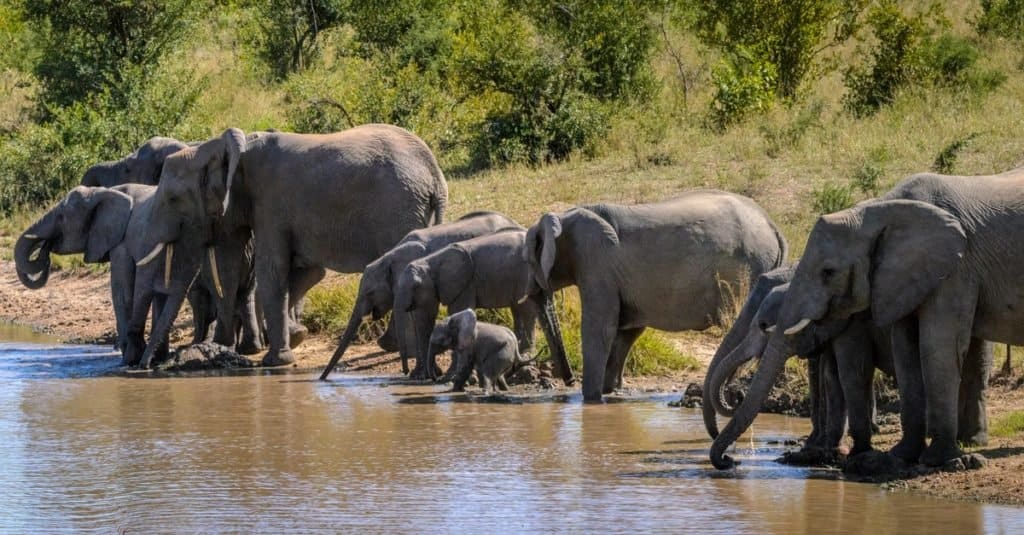
An average elephant can hold up to 2.5 gallons of water in their trunk.
©Roger de la Harpe/Shutterstock.com
The main purpose that the elephant trunks are used for is for eating and drinking. The trunk can be used to locate and then crush or manipulate the food, making it easier to deliver to the mouth and eat. The elephant will crush the food with its trunk, and then use its impressive suction power to pick up the food. They can then move that mobile body part and bring the food right up to their mouths. They can even reverse the suction of their trunk and blow the food into their mouths! The same process is used for drinking water, and the length of their trunk allows them to hold a large amount of water at a time.
As Defense
The elephants use their trunks and water for more than just drinking. They also use their trunks to help them bathe. Similarly, when they drink, the elephant will use their trunk to suck up some water. Then, they will spray water on themselves. Elephants will do this to wash themselves or to help keep themselves cool. They may even use their trunk as a method of defense against other animals. They can suck up that water and use it as a super soaker to scare off any potential predators.
Additionally, they can use their trunks to bash, smash, and grab opponents during a fight. Being one of their only controllable forms of attack, it is common for elephants to use their trunks in this way. Also, they can deal a lot of damage using this method.
For Communication
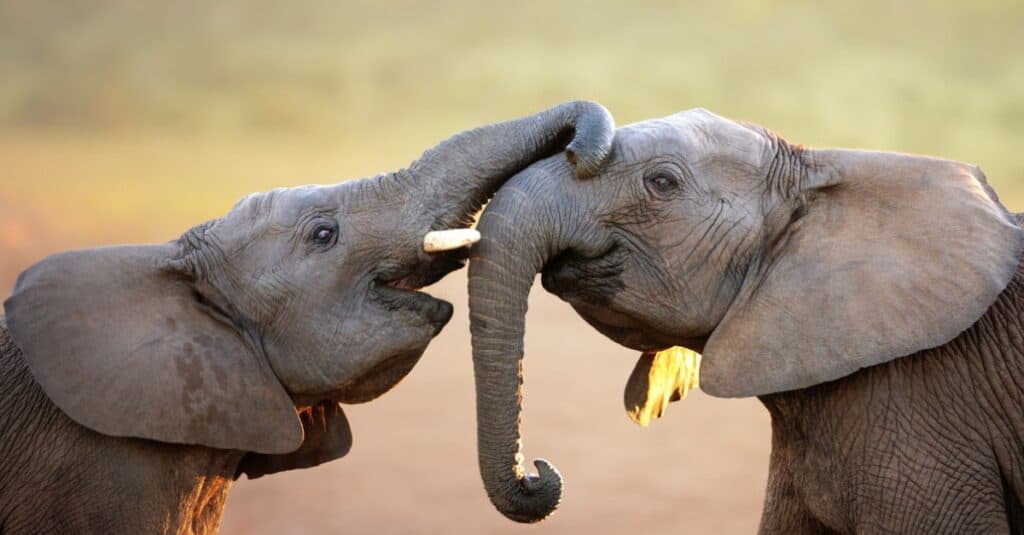
Elephants commonly greet one another by entwining their trunks together.
©iStock.com/johan63
The elephant trunk plays a critical role in their communication. While people assume the trumpet-like noises that we hear from their trunks are their method of communication, that is usually not the case. Most noises produced by the elephant for communicating with its herd are too low for the human ear to detect. So how does the trunk facilitate communication then? A raised trunk can signal a greeting or demonstrate a threat. Additionally, a lowered trunk could be a form of submission. A lower-ranking member of the herd will place the tip of its trunk into the mouth of the higher-ranking herd member. Scientists believe this is a pacifying gesture. Also, elephants may greet one another by entwining their trunks together.
They can create wailing sounds with their trunks as a way to relay messages to other elephants. Their trunk resembles an instrument in the fact that the elephant can manipulate its shape to alter the sounds that come out. They can also demonstrate various emotions by the positioning of their trunk. For example, flaring their trunk high can signal that a predator is near. They also use their trunks in play wrestling, caressing during courtship, and as dominance displays.
For Touch and Sensory Abilities
For touch, their trunk has over 150,000 muscle fibers in it which help to make it strong for carrying objects. Additionally, it contains finger-like projections on its tip, which allow it to easily grasp onto objects. An elephant trunk can pick up objects as small as a single piece of straw. Additionally, elephants have a large amount of nerves near the end of their trunk. This allows them to use their trunk almost as a hand to feel objects and the world around them. These nerves also allow them to pick up on sensitive intrasound communications that travel through the ground that come from other elephants.
Many people see the elephant’s trunk as their nose, and in a way, it does function as one. Trunks allow air to travel in, which enables scent molecules to travel up the trunk and reach specialized cells. These specialized olfactory cells allow elephants to pick up on even the tiniest of scents. In addition to smelling, elephants also breathe through their trunk. While they can also breathe through their mouths, elephants have two small nostrils at the end of their trunk that they breathe out of.
How Did The Elephant Get Its Trunk?
The trunk of an elephant derives from a fusion of their nose and upper lip. People who study elephants believe that their trunks adapted in response to the development of their tusks. Although elephant tusks appear large today, the tusks of their ancestors were dramatically larger. Due to the large size of the tusks, and the fact that they were longer than the elephant’s head, foraging for food often became an issue.
Therefore, biologists believe that the trunk evolved, and now those with this feature have an easier time finding food. Easy maneuverability was one of the key components that the trunk needed to have to be successful. That is why they must be flexible, controllable, and mobile, to help the elephant successfully forage for, as well as eat their food.
Scientists also have another theory about the evolution of elephant trunks. Some scientists believe that the trunks started as a snorkel. It is theorized that elephants came from a semi-aquatic ancestor and this snorkel-like trunk would allow them to swim under the water for long durations of time.
Fun Facts About Elephant Trunks
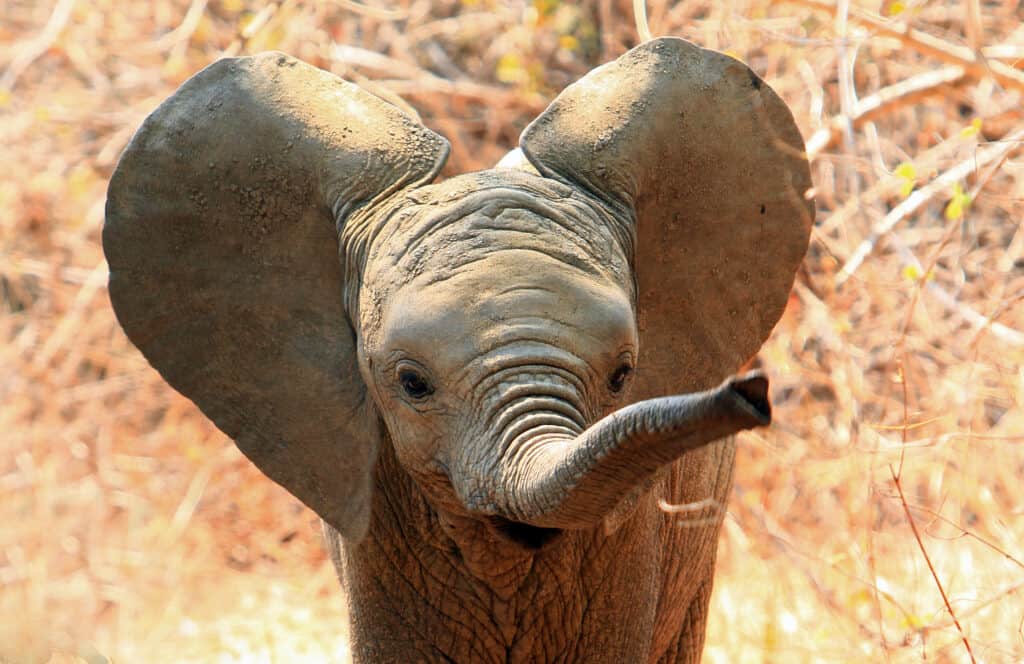
Baby elephants cannot fully control their trunks until they reach about a year old.
©paula french/Shutterstock.com
- An elephant trunk contains around 150,000 separate muscle fibers in it.
- There are no bones in an elephant’s trunk.
- An elephant can lift 4.5 % of its weight with its trunk.
- Baby elephants can walk at birth but it takes them months before they can control their trunks.
The photo featured at the top of this post is © Anton_Ivanov/Shutterstock.com
Thank you for reading! Have some feedback for us? Contact the AZ Animals editorial team.






